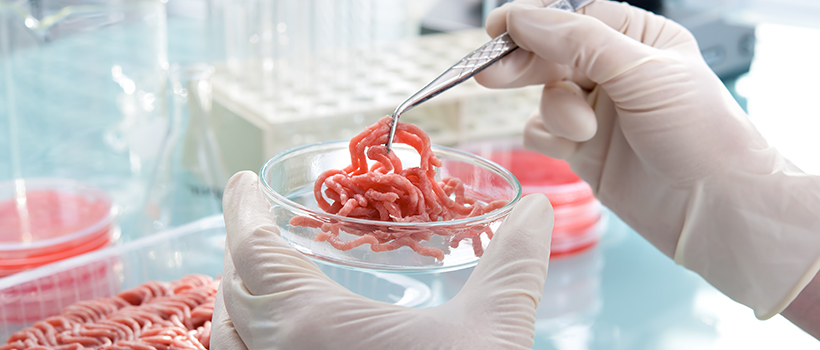
Major milestone for human food made with cultivated animal cells in the United States
25 November 2022 | Vladas Činga, Regulatory Affairs Manager
What has been announced?
On the 16 of November, the FDA announced that it has completed its first pre-market consultation for a human food from cultivated animal cells. The product, by UPSIDE Foods, is made from sheets of cells from chicken muscle and connective tissues.
The information on this cultivated animal cell food product and its associated production process was submitted to the FDA.
After consultation the FDA issued an official response letter to UPSIDE Foods stating that, based on the information presented, as well as other information available to the agency, they did not identify a basis for concluding that the production process as described would be expected to result in food that bears or contains any substance or microorganism that would adulterate the food.
It also stated that they have no questions at this time regarding UPSIDE Foods’ conclusion that foods comprised of or containing cultured chicken cell material resulting from the production process as described are as safe as comparable foods produced by other methods.
What does this mean? What other considerations are there?
While this is a significant step forward for cultivated animal cell products in the United States, before putting the product on the market, the company must ensure that foods it markets are safe, wholesome and in compliance with all other applicable legal and regulatory requirements, including labelling and inspection requirements administered by the Food Safety and Inspection Service within the U.S. Department of Agriculture (USDA-FSIS). Although current USDA-FSIS regulations requiring sanitation and HACCP systems are immediately applicable, requirements for the labelling of products from cultivated cells of livestock or poultry are not yet available from USDA-FSIS.
Yet here we finally see in practice what data was deemed necessary by the FDA to successfully conclude the consultation for this type of product
Nonetheless, this announcement is very important. Guidance documents on data requirements for cultivated animal cell product approvals are still scarce globally, with the FDA planning to publish draft industry guidance on premarket consultation on cultured animal cell foods by December 2022. Yet here we finally see in practice what data was deemed necessary by the FDA to successfully conclude the consultation for this type of product.
The creation of a new inventory for human food made with cultured animal cells signals that the FDA is confident to have found a pathway to legally place cultivated animal cell food products onto the U.S. market for human consumption, and expects or has already started other consultations. Tens of companies in the cultivated animal cell food space are racing to be the first to put their product onto the U.S. market at scale and, most importantly, at a competitive price.
What support can Campden BRI offer businesses?
With our in-depth knowledge of legislation surrounding “novel” foods, Campden BRI is well positioned to assist companies with gap analyses, risk assessments and dossier preparations, for markets such as the U.S., EU, UK, Singapore, Australia/New Zealand and others.
How can we help you?
If you’d like to find out more about legislation around novel foods, contact our support team to find out how we can help.
Are you a Campden BRI member who attends the MIG meetings?
- If not, you’re missing out on a whole host of exclusive benefits such as learning from industry-leading experts and networking with peers to overcome your challenges.






